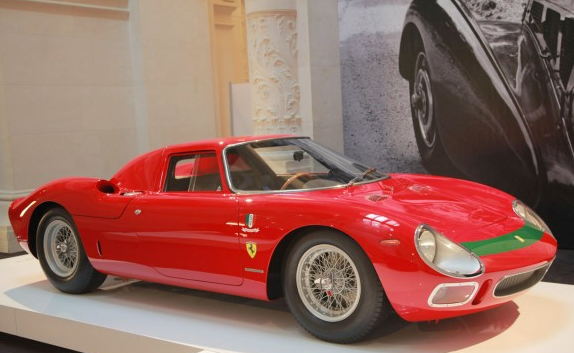Ferrari 250 LM - the best-known Ferrari race car of the '60s
Homologation was a keyword in the LM's sporting history.
With a superlatively sporty body shell penned by Pininfarina and constructed in aluminum by Scaglietti, Ferrari 250 LM looked like it was born for the racetrack. Indeed, the 250 LM was born for the racetrack, which led to serious problems when Ferrari attempted to homologate the car for racing.
Ferrari 250 LM
In 1963, the first 250 LM had made its official debut at the Paris Motor show. Ferrari had intended that the 250 LM be homologated for racing as a Group 3 Grand Touring Car, however their request was quickly refused by the FIA. In 1964, the FIA denied the homologation request for the LM, as they didn't think Ferrari would ever produce 100 LMs. Reluctant to give up, Ferrari continued development work on the LM. However, only 32 250 LMs were eventually constructed, proving the FIA's assumptions right. The 250 LM thus had to run as a Prototype until it was homologated as a Group 4 Sports Car for the 1966 season. This didn't stop the Ferrari 250 LM from winning and in 1964 ten victories were scored out of 35 entries. Five 250 LMs were entered in the 1965 24 Hours of Le Mans by privateers, with the NART entrant winning the class followed a second place finish and a sixth place finish for the 250 LM. That Ferrari 250 LM was able to find success even in the prototype class was proof of Ferrari's engineering excellence. The LM, produced by a company under the direction of a fearless and often ruthless leader, was the product of an unstoppable desire to go faster and an indefatigable drive to win. Drivers Jochen Rindt and Masten Gregory had much to celebrate since it was Ferrari 250 LM’s greatest moment as well as their own. They were piloting Ferrari's ideal sports-racing car which had the the successful hallmarks of the mid-1960s design with a mid-mounted V12 engine in a low-drag body.
Ferrari 250 LM
Main difference between the show car and all other 250 LMs was the engine displacement. The 250 LM was very much like the Ferrari 250 P with a roof. Both cars shared the same lengthened Dino sports prototype (SP) chassis and the well tested 250 GT V12. Since this engine fit well within the three liter limit for racing cars, it was an easy choice. The 250 LM was given a GTO derived 3-liter power plant with the production cars received a 3.3-liter engine. In good Ferrari tradition, 250 LM should thus have been called 275 LM, but the name 250 LM persisted. For commercial and homologation reasons the 250 was used.
Ferrari 250 LM
Ferrari 250 LM left the factory painted in red but was repainted to yellow. By 1965, Ferrari was desperate, and a luxurious road car was made by Pininfarina on chassis #6025 complete with red leather interior and electric windows. This become the only Ferrari 250 LM that never raced. It is easily recognized by its two windshield wiper spindels. In the early 1980s, the car was given a restoration.
With only 32 built, Ferrari 250 LM is extremely rare and valuable, for this reason a number of replicas were built. To add to the confusion original serial numbers were used for the replicas. One thing is for sure, more 250 LMs exist today than originally left the factory. In more recent times, the car has raced in vintage competition, including the Goodwood Revival, Festival of Speed at Goodwood, the 2nd LeMans Classic, and Ferrari Historic competition. Perhaps the best-known Ferrari race car of the '60s are the 250 LM. Although Ferrari 250 LM was not as successful as its predecessors, it did manage to secure Ferrari's last overall Le Mans victory and to this day it has a special spot in many Ferrari fan's hearts.
Post: Tram Nguyen


















++(3).jpg)
